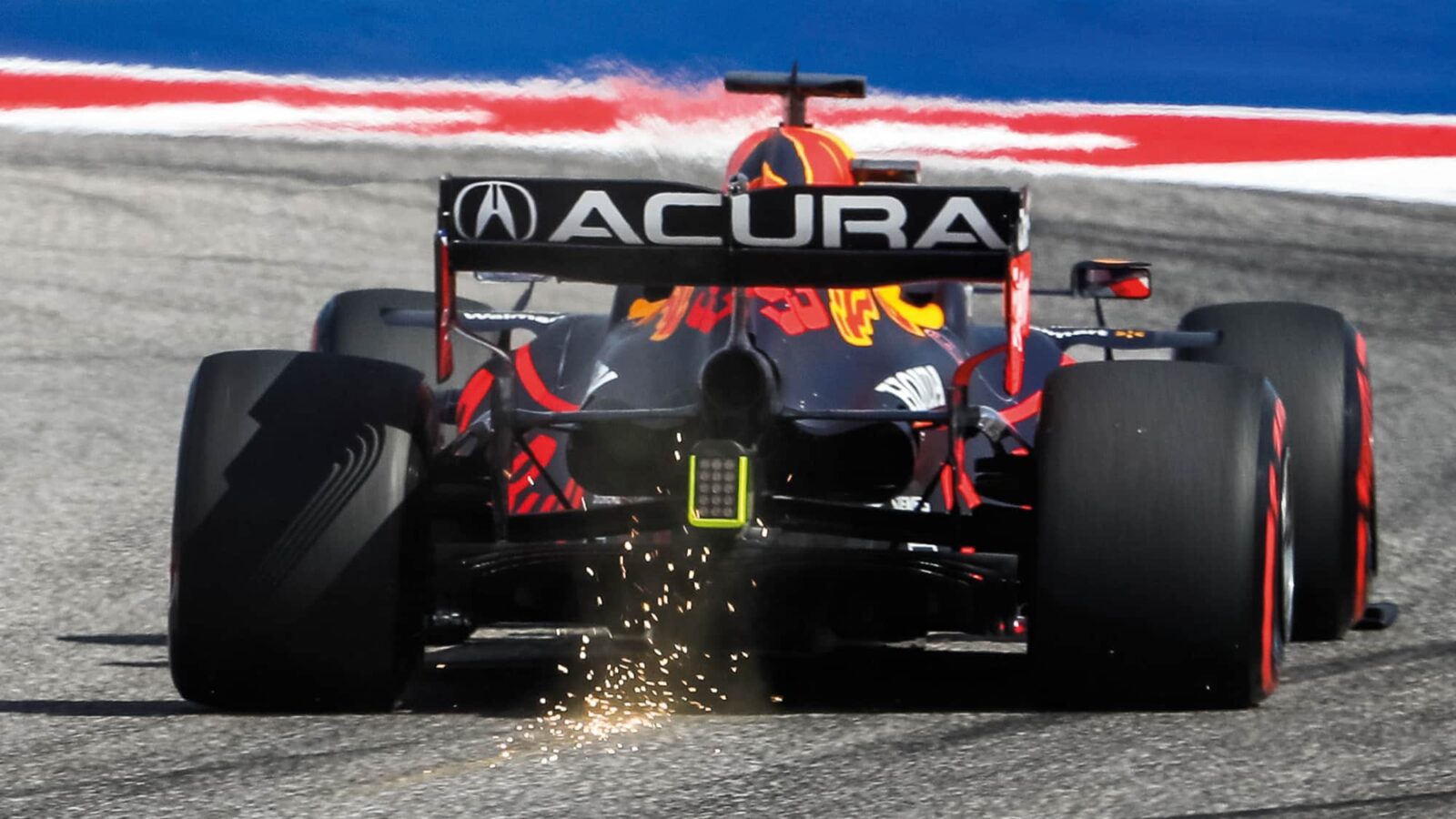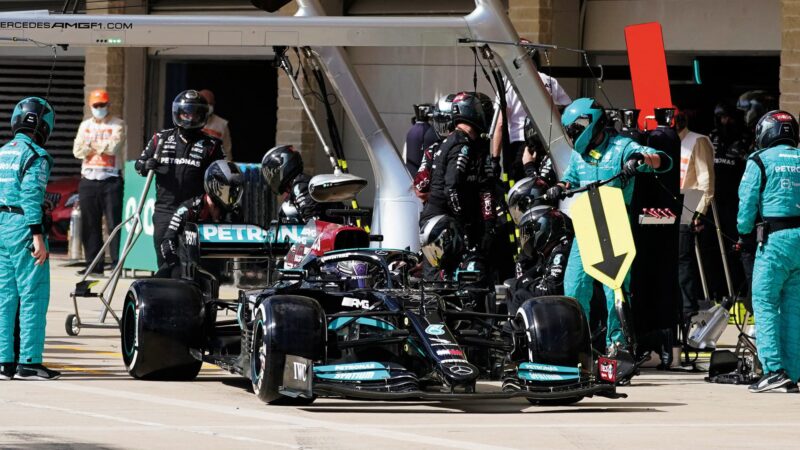A bumpy ride for F1 teams in the Americas
Circuit knobbles added to tyre trauma for the top teams at the 2021 US Grand Prix in Austin, says Mark Hughes

In a race where controlling rear tyre temperatures was key, Red Bull’s RB16B proved the best equipped
The Circuit of the Americas is tough on tyres, but this year it was more so. The bumps had developed further since they first became apparent in 2019 as the soil beneath has expanded and contracted heavily in the extreme heat and sudden heavy rain the place gets through the year.
So thermal degradation was the dominant mechanism of the race we saw, to an even greater extent than has previously been the case here. The tyres undergo very high loadings for a long time through Turns 3/4/5/6 and then again through the long, double-loop of 17/18. In both cases these workouts are followed by corners demanding acceleration from low speed. The rear tyres do not get an adequate chance to recover and are constantly having to be prevented from reaching excess temperatures by the driver. The bumps, especially those through Turn 8, were extreme and the constant expansion/ contraction of the sidewalls created by them just added yet more heat to the tyre.
“Three stops would have been slow, and one stop was impossible”
This information is needed to properly understand the duel between Max Verstappen and Lewis Hamilton. Both drivers have multiple times shown their mastery of tyre usage, of maintaining strong pace while taking very little from the rubber. Any difference between them in this is to do with the tyre usage of their respective cars. “There’s a bit of split opinion in the team actually, about which car is better on the tyres,” says Red Bull’s technical director Pierre Wache. “We have a different car characteristic. [Mercedes] are a lot better than us at controlling the slip, the stress on the tyre. How they balance their car, it looks like they are stressing more the front than the rear compared to us, but in terms of car design I think we are better at temperature control on the rear.”
Austin was all about temperature control of the rear. Which, in the year of the Mercedes W12 vs Red Bull RB16B, made it a Red Bull weekend. It was even apparent in the qualifying laps of Verstappen on pole and Hamilton, 0.2sec behind in second. There was no way of combining the Merc’s best sector 1 and sector 3 times. Take everything the tyre had to give in the Esses early in the lap and it would be too hot for optimum grip through 17/18. The Red Bull could stay in the temperature sweet spot for the whole lap.
In the race, tyre deg was so high that everyone would be driving whole seconds slower than their potential, keeping the rears from overheating just to make adequate stint lengths. Get them too hot and they become useless and won’t recover, no matter how much you back off. This is just a typical thermal deg race in the Pirelli era. Not every race is thermally limited; sometimes it’s graining or wear, sometimes it’s the fronts, but Austin this year was at the far end of the rear thermal deg scale.

Tyre wear gave Mercedes a strategic headache in Austin
Which only increased Red Bull’s advantage over Mercedes. Except Hamilton won the start. Now we had an interesting race. The fact that Verstappen was hanging on comfortably right behind Hamilton for the first stint – the Red Bull’s tyres well within their comfort zone when driven at a Mercedes pace – told you that in clear air the Red Bull would be gone. But how to get it? Overtaking here requires a 1.2sec advantage. So that wasn’t about to happen, not even with DRS, especially given the Merc’s end-of-straight advantage. It would have to happen around the stops.
Who dared pit first to either undercut or defend against it? Mercedes reckoned in hindsight it would need to have pitted on lap eight to be sure of going earlier than Verstappen and guaranteeing track position – but it felt unable to do that as the tyre range wasn’t good enough to get through on two stops if the first was that early. Merc’s numbers said it needed to get to lap 12 to be sure of getting through on two (three would have been disastrously slow, one was impossible). Because the Red Bull had better control of its rear temps, Mercedes could be more aggressive with the early stop – albeit in the knowledge that taking track position in this way would entail a very defensive late race. It was essentially Bahrain but with the positions reversed as this time Verstappen stole position with a daringly early stop on lap nine. He made a hard out-lap to ensure the undercut would work – and in so doing damaged those delicate rear tyres. But no matter. This was all about track position, not pace. Hamilton went a further four laps, rejoining some way back and taking care to bring in the new tyres gently, around 2.5sec slower than Verstappen. So in the second stint, with his tyres both four laps newer and undamaged, Hamilton was able to catch Verstappen quickly enough that the Red Bull had to be brought in early again to prevent the Merc undercutting ahead, after a stint of just 19 laps. Which left him with 27 to go. Hamilton ran an extra eight and rejoined 8.8sec behind on tyres around 0.8sec per lap faster.
Verstappen’s task then was to go fast enough that Hamilton had to eat into his tyre advantage to catch him, but not so fast that he damaged his own tyres. He judged this perfectly. Hamilton caught the Red Bull but his tyres were by then no better than Verstappen’s older ones. Hamilton set fastest lap at 2.6sec off his potential pace, illustrating how the race was not won on pace, but only on tyre usage and track position.

